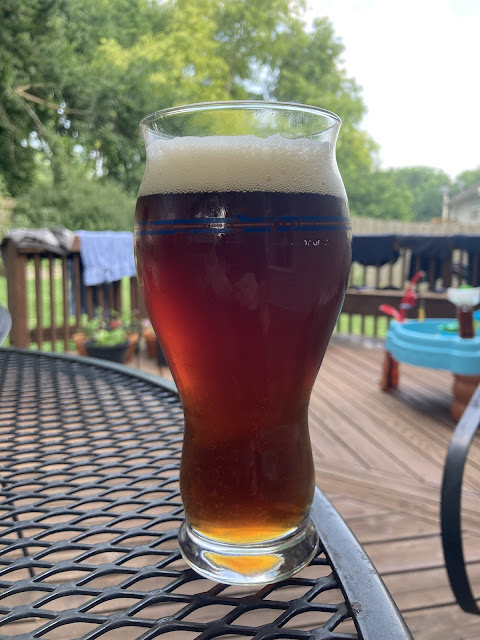Pickwick Brewing
Monday, May 12, 2025
Honkers Ale clone
Saturday, October 5, 2024
SS Minnow Mild
2024 English bitter
Tuesday, August 27, 2024
2023 German Pilsner
Brewed 10/27/23. Took the afternoon off to make it. Started before 1 and finished by 4:30, aside from some cleaning. Maybe record time for me. Final beer of the year.
OG 1.042-43. Brew software estimated 1.048. I used floor malted Bohemian Pilsner which I think I’ve read can lead to lower extract yield.
Kegged 11/6/23. FG 1.012.
I don’t remember much about this beer. It was good, but not so good that it was memorable. It cleared well with whirlfloc only and no gelatin.
8.5 floor malted pils.
1 oz of Halletau Mittelfruh (2.9 AA) at 60, 30, and 5 minutes.
6 grams gypsum in sparge water. Otherwise no water modifications.
Omega Oktoberfest yeast.
Wednesday, June 19, 2024
2023 festbier
2023 helles
Saturday, May 4, 2024
2023 homegrown hop pale ale
Simcoe pale ale - summer 2023
Civil Life Brown Ale clone
Civil Life used to list the ingredients on their web site but it seems they no longer do. Using the ingredients listed on an archived version of their site, I pieced together a recipe that I thought would get me close. Malt amounts were not listed. Nor were hop amounts or a specific yeast.
When I developed my recipe, I had not had the real thing for a while. I had remembered it being a fairly dark beer. I’ve had the real thing a time or two after brewing this and am now aware of a few differences. The real thing is slightly lighter than mine and appeared very dark red or amber when held to light. Mine is also more roasty/astringent, which I attribute to the Carafa. Reducing that ingredient should solve the astringency and color problems. The real thing also has a strong brown malt flavor. If I brew this again I will increase the brown malt.
Recipe for 5 gallons:
Friday, April 19, 2024
Golden ale
Brewed summer 2023. I had wanted to brew an English golden ale for quite a while. I even built up yeast from a few cans of Civil Life Angel and the Sword. The yeast took off but I didn’t get around to using it right away and it later seemed to take on a sour flavor so I discarded it. I used US-05 instead. Pretty simple beer but it tasted good. I’m not sure it’s one I would brew again, at least with US-05. Some English yeast character would help a lot.
Sunday, October 1, 2023
Kolsch
Leaving aside particular styles of beers I want to drink, there are a number of other considerations that go into homebrewing. Some of those things are experimentation and cost. If I can save a few dollars when brewing, I will try to do so. But I also like to try new things and experiment. So this is where yeast culturing comes in.
I like Kolsch but honestly haven't had a lot of it over the years. And when I buy yeast, I typically try to brew with it multiple times, so it never seemed to make sense - at least to my cheapskate self - to purchase a Kolsch yeast and only use it once, since I wouldn't generally be making multiple Kolsch batches.
After purchasing a four-pack of Riggs Kolsch back in the spring and noticing the beer was quite hazy, I decided to see if I could culture the yeast from a can. It worked well. The yeast took off, and I contacted the brewery to ask about the strain. They replied that they use BSI-29. There is not much information about this particular yeast on the internet, but according to BSI, it is similar to WLP029.
I continued feeding the yeast until I had enough to pitch as a starter, in May 2023. The night of the brew, I recall that the starter had an apple-y aroma. I was nervous about that but decided to take the risk. And what a big risk. I've been burned by bad yeast so many times in the past. Anyhow, everything was fine. The fermentation was fairly slow and did not form a big krausen.
Despite the smell of the starter, the beer turned out great. It cleared nicely over time, even though I did not use gelatin. It had a very nice grainy flavor and no yeast off flavors. Not a lot of hop flavor as I recall. This was a well-balanced beer and a recipe that I would love to brew again.
Recipe for 5 gallons (inspired by beerandbrewing.com):
7.5 lbs German pilsner






















